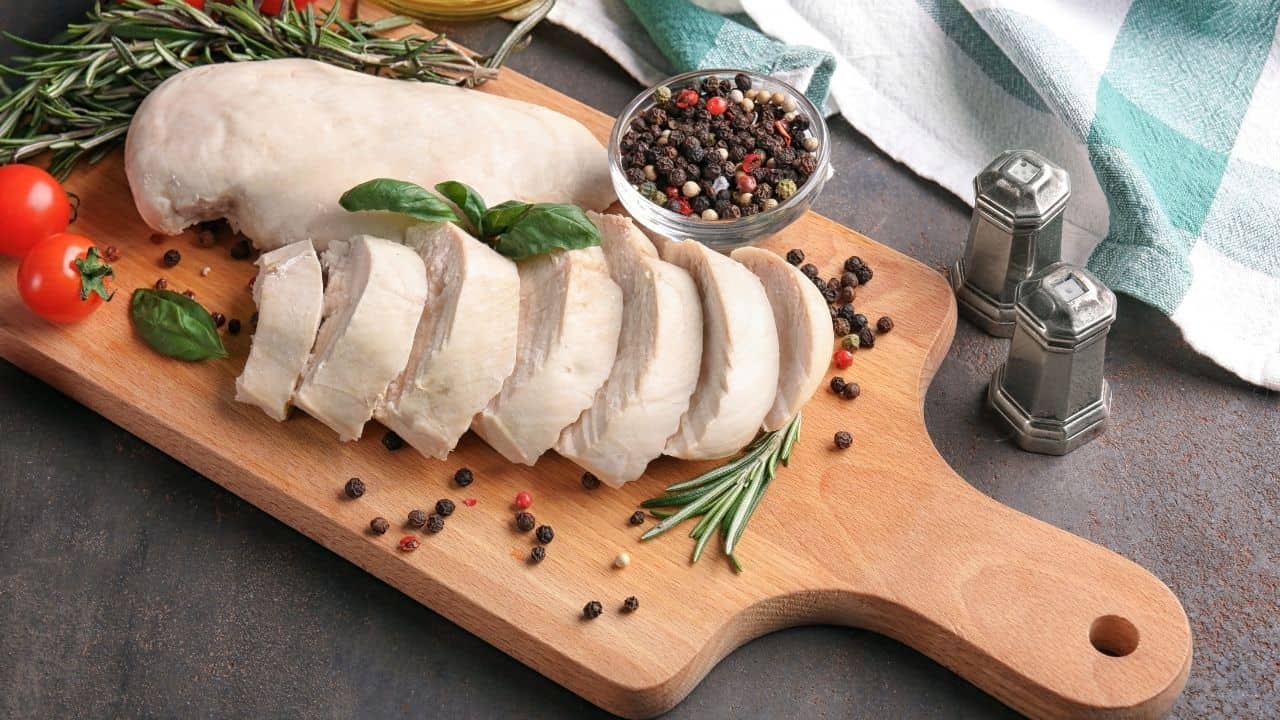Here is how to perfectly poach chicken for chicken salad in just a few simple steps. I have also included some ideas on how to season the poached chicken.
I will also go over some top tips and troubleshooting to ensure you have all the information you need to create a beautifully cooked, moist, tasty, and delicate chicken.
Is Poached Chicken The Same As Boiled?

Poaching is generally a gentler, lower-temperature technique of cooking than boiling. When poached, chicken is submerged and cooked in only a little bit of water resulting in more tender and less tough meat compared to boiling. Poaching temperatures range from 170-180°F (75-82°C), whereas boiling brings the water to 212°F (100°C) or higher.
Simmering is somewhat in between poaching and boiling. Reaching temperatures of 185-200°F (85-95°C).
Boiling is generally a more harsh cooking method that can cook your food quickly but may reduce its nutrients, moisture, and flavor.
Why Poach Chicken?
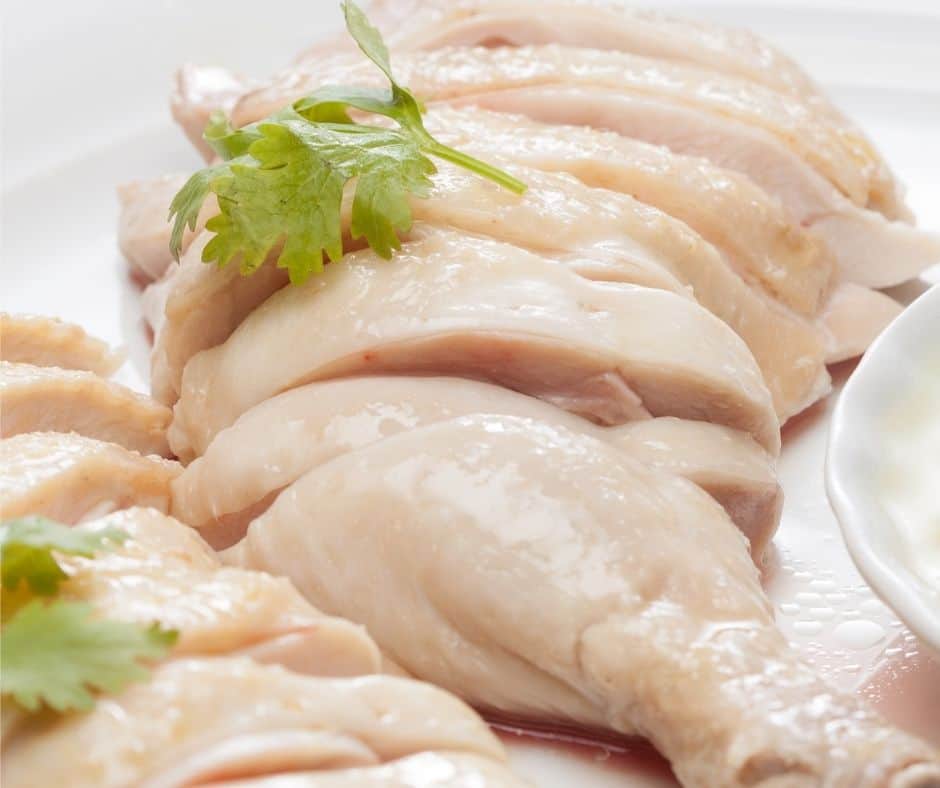
The healthiest way to cook your chicken is to poach it. This is because poaching does not require any oil and only uses water to cook the meat.
Although you may prefer the taste of roasted or shallow fried chicken, poaching is the best cooking method for chicken salad if you want a more succulent texture and fewer calories.
Compared to boiling, which reduces the nutrient content of the food more than any other cooking method, poaching is one of the best methods for retaining nutrients and moisture. Boiling or simmering can often overcook the meat, which makes it taste bland and rubbery.
It is also a very simple cooking method, and even the most inexperienced cook can poach a succulent chicken.
How To Poach Chicken?
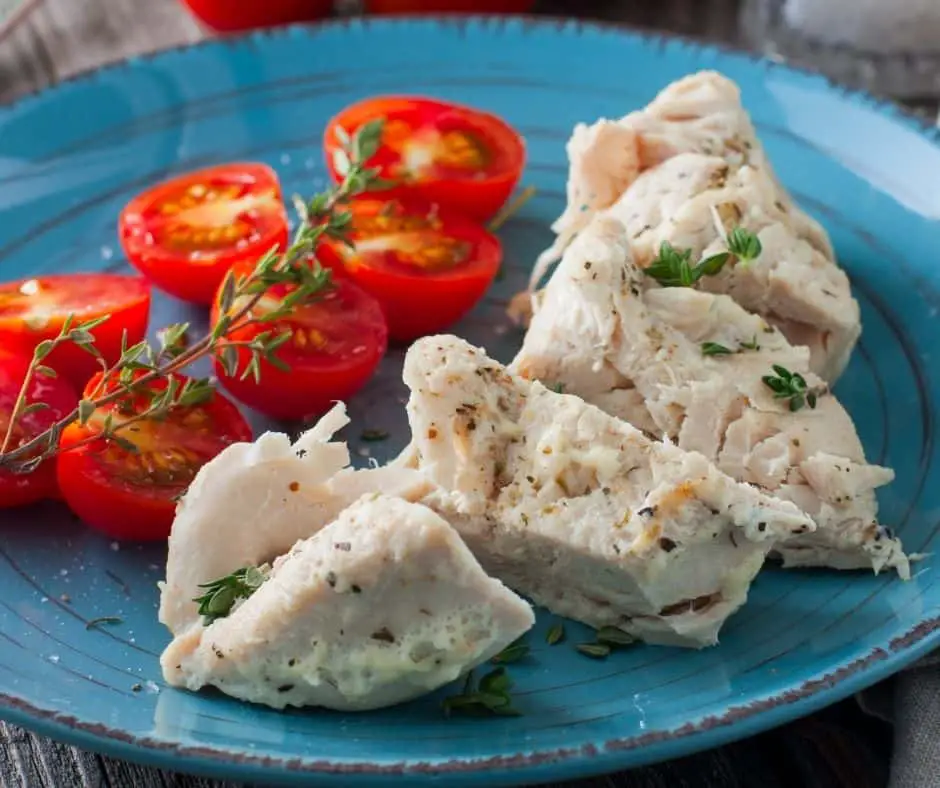
You Will Need:
- Meat cooking thermometer (recommended).
- Saucepan with a lid. Ideally, a shallow, wide pan.
- Sharp knife.
- Boneless, skinless chicken breasts (preferred).
- Salt and seasoning (see below for ideas).
Instructions:
- Add your chicken to the saucepan and sprinkle it with kosher salt (kosher salt is recommended by chefs) and any other seasonings.
- Cover with cold water (not hot) until the meat is completely submerged.
- Bring the cold water to a gentle simmer between 170-180°F (75-82°C) and then turn down the heat and add the lid to the pan. If you notice some white foam appearing on the surface of the water, this is completely normal.
- Allow to simmer for at least 10 minutes. Then check the meat by using a meat thermometer. Place the spoke into the middle of the thickest part of the meat and record the temperature. The meat needs to reach a temperature of 165°F (75°C).
- Check every 2-3 minutes until the chicken is thoroughly cooked. Timings will vary depending on the thickness of the meat and whether it has a bone or not.
- Remove the chicken from the water and place it on a chopping board. Allow the meat to rest and cool for 5 minutes before cutting. This allows the chicken to retain moisture.
- Then cut and serve in your chicken salad. If your chicken has bones, you can remove them at this stage.
If poached chicken is a bit bland and boring for you, check out how to cook super delicious and tender chicken soaked in buttermilk – 5 Ways To Cook Chicken Soaked In Buttermilk.
Using The Leftover Poached Chicken Broth
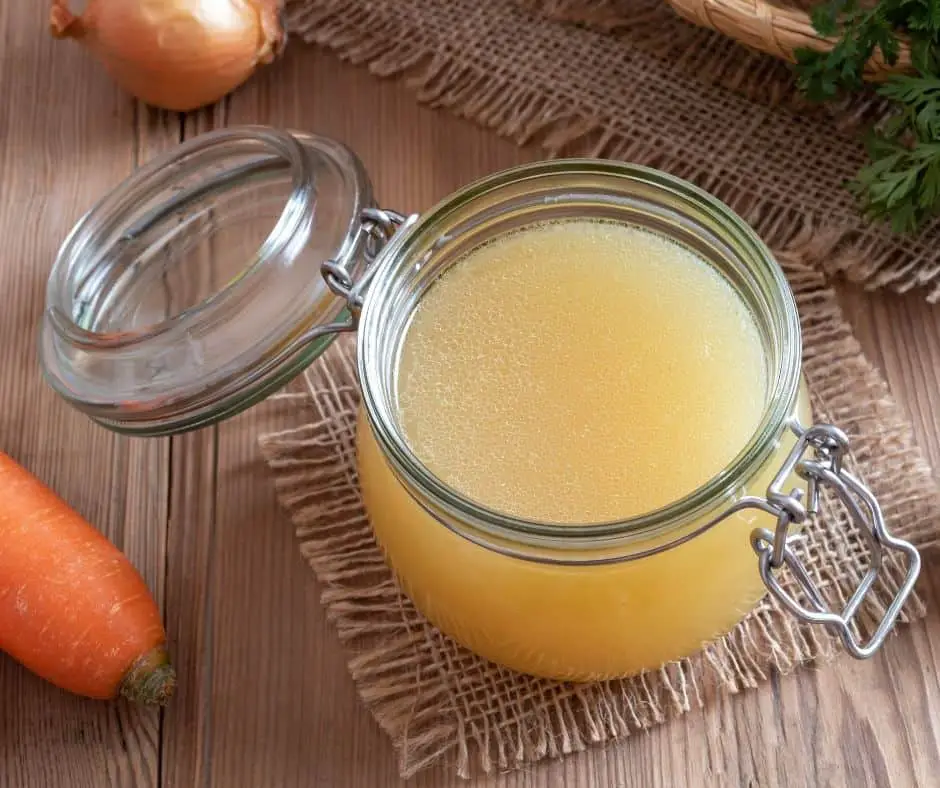
You can use the leftover poaching liquid to make a tasty and healthy broth. This reduces food waste and also acts as a delicious base for homemade soups.
- Add 2-3 cups of boiling water from the kettle to the poaching water.
- Add the leftover chicken bones from the poached chicken to the liquid and keep simmering.
- Add a carrot, onion, whole peppercorns, a clove of garlic, and one bay leaf.
- Keep simmering for 2-3 hours, occasionally removing the white foam from the top of the water.
- Then strain the liquid to remove the vegetables, bones, and seasoning and store the broth in an airtight jar or container. It will last for up to 3 days in the fridge or up to 6 months in the freezer.
How To Season Poached Chicken?
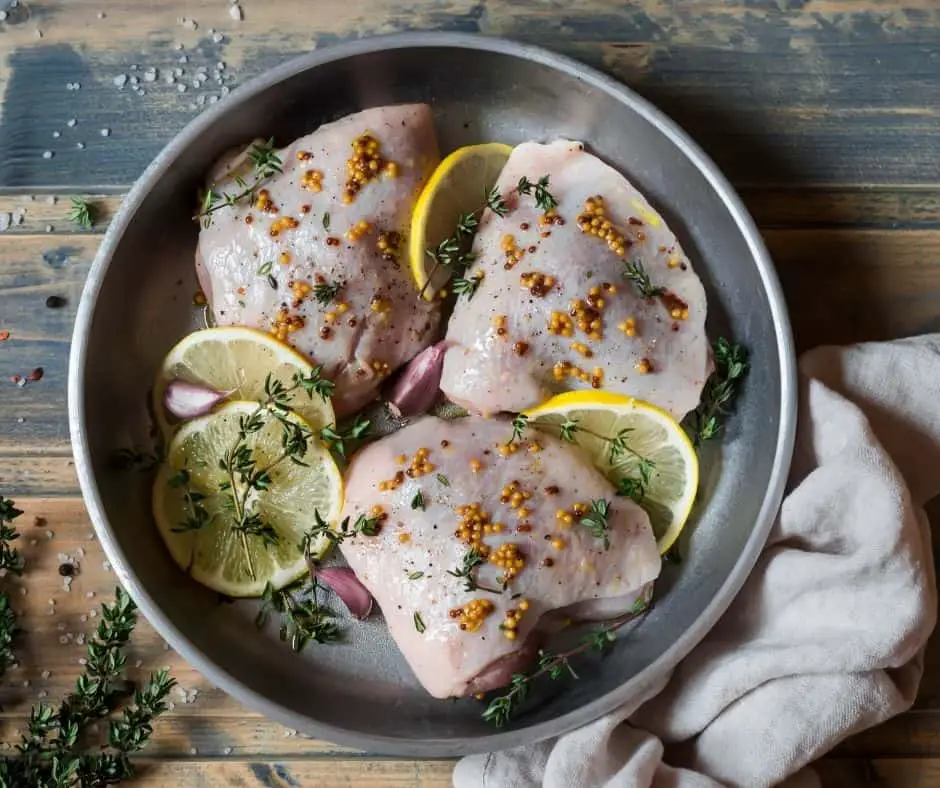
There are two ways to increase the flavor of your chicken.
Firstly, you can use other poaching liquids, such as:
- Milk, dairy, or coconut milk.
- Bouillon cubes or broths, chicken or vegetable.
- Wine, exchange ⅓ of your water for white wine.
- If you do not have any wine, just use some lemon juice.
Secondly, you can add aromatics to increase the flavor profile of the broth and chicken:
- Salt. Add at least one teaspoon of salt when poaching.
- Herbs. Popular options include parsley, thyme, rosemary, bay leaves. Fresh is always best, but dried herbs will suffice.
- Vegetables, such as chopped carrots, celery, onions, garlic, fresh ginger.
Poached Chicken Salad Ideas

Poached chicken is an excellent ingredient to add to your salads because it is more succulent than boiled or fried chicken, and it is also an excellent source of lean protein.
It is also relatively versatile meat, so you can add additional flavors and ingredients to change the taste of your salad to make it more fun and exciting.
Below are some ideas for poached chicken salad recipes that you can try.
Ingredients For A Delicious And Nourishing Chicken Salad:
- Poached chicken, sliced or shredded.
- Veggies such as celery, carrot, green onions, cucumber, sweetcorn, red pepper or even chopped cabbage, for crunch.
- Add fiber by adding some lentils like fresh green peas drained chickpeas.
- Add some spice to your salad with jalapenos, red pepper flakes, peppercorn, or hot sauce.
- Mix in some chopped apples, dried cranberries, grapes, or raisins to add some sweet and sour flavors.
- Avocado, black olives or mayonnaise for a creamy element.
- Top with sunflower or pumpkin seeds to add healthy fats and more protein.
- To add a carbohydrate, service with sourdough bread or quinoa or use it for sandwiches and wraps.
There are no set rules for what you should use in your salad, so feel free to experiment and try out different combinations.
Chicken Salad Dressing Recipes
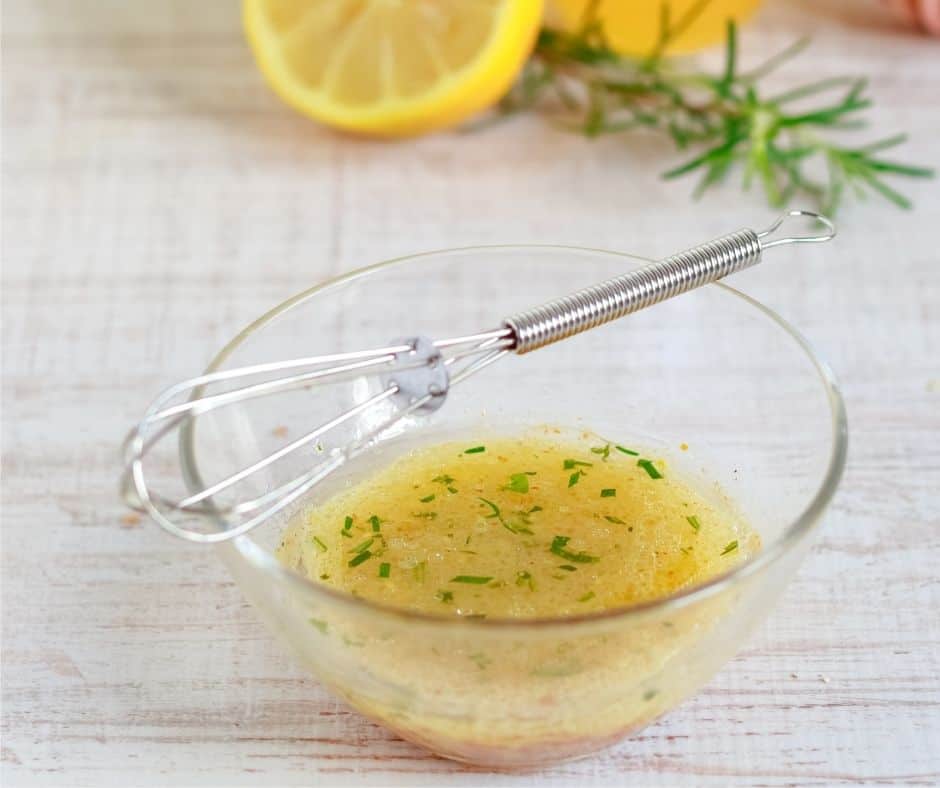
Shake together the following ingredients in a jar or mix in a bowl. Portions listed for 1-2 servings.
Honey and Mustard Dressing:
- 1 tablespoon honey
- 1 tablespoon apple cider vinegar
- 1 tablespoon olive oil
- 1 tablespoon mustard of your choice
- A pinch of salt and black pepper
Balsalmic Vinegarette:
- 1 tablespoon balsamic vinegar
- 1 tablespoon extra virgin olive oil
- 1 tablespoon of bottled or fresh squeezed lemon juice
- ½ tablespoon honey
- ½ teaspoon mustard
- ¼ clove garlic, minced
- Salt and black pepper
Frequently Asked Questions
Best Kind Of Chicken To Poach
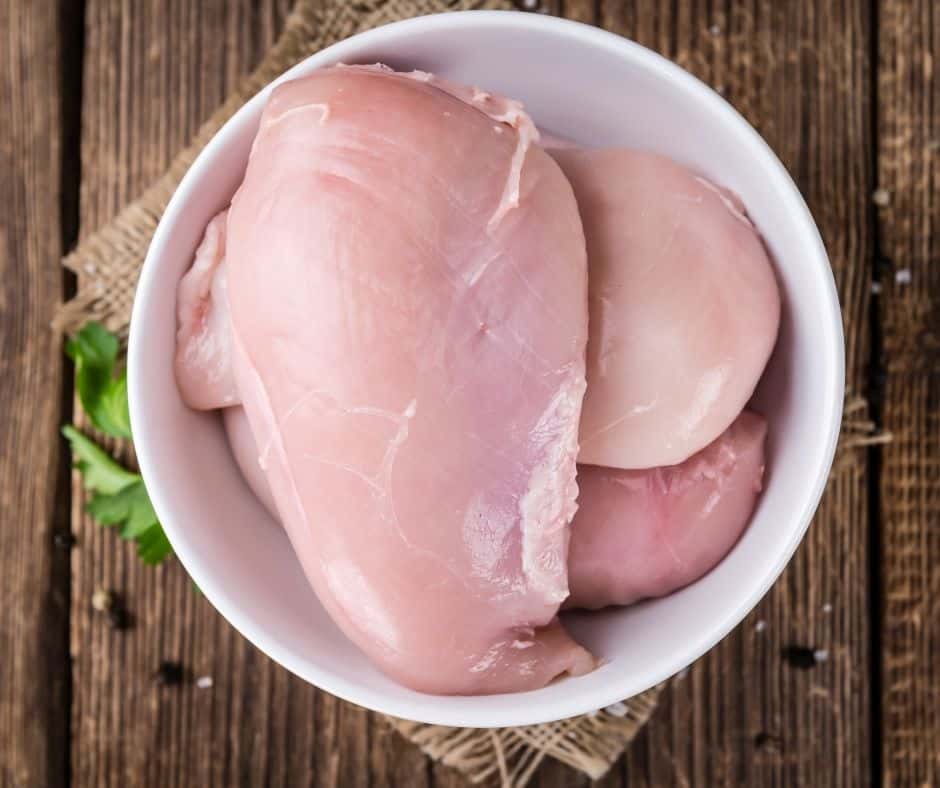
You can cook any type of chicken using the poaching method described above. However, boneless and skinless chicken breasts seem to be most popular among athletes and dieters.
Nevertheless, since the chicken breast is very lean, it has the tendency to become dry when overcooked. For less lean cuts but more juicer meat, you can pouch thighs and drumsticks.
Whatever part of the chicken you are using, remove the skin before poaching to minimize the fat content.
It’s also worth noting that chicken with the bones may take a different length of time to cook, so always ensure your meat is thoroughly cooked before eating.
How Do You Know When The Chicken Breast Is Cooked?
You will know your chicken is fully cooked when it reaches a temperature of 165°F (75°C) or higher in the thickest part of the meat. The chicken will also appear white and not pink on the inside when cut. This usually takes at least 10 minutes when poaching.
Can I Poach Chicken From Frozen?
Yes, you can cook chicken from frozen. You do not need to defrost it before poaching, but it may take longer to reach the desired internal temperature of 165°F (75°C). Although you may choose to thaw it first, this is not necessary.
How Long Does Poached Chicken Last In The Fridge?
Wait until the meat is cold before placing it in an airtight container in the fridge. The poached chicken will stay fresh for up to 4 days.
You can also keep cooked poultry in the freezer in an airtight container or a freezer bag for up to 3 months.
Top Tips For Perfect Poached Chicken
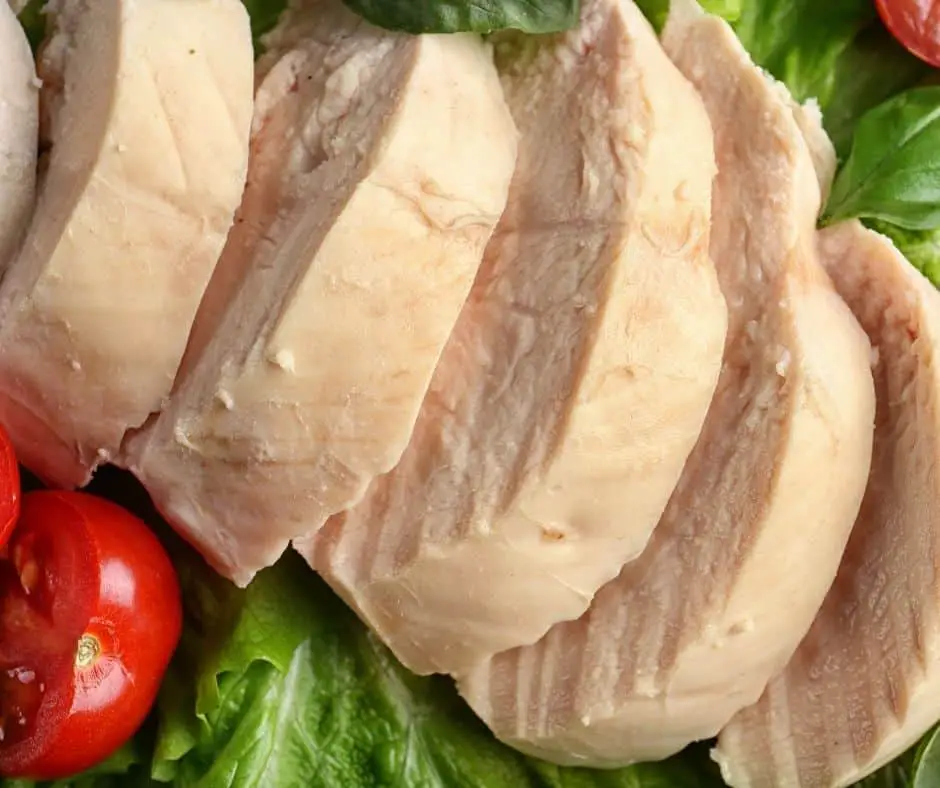
- If you don’t own a thermometer, you can check your chicken by making a small cut in the middle of the thickest part of the meat. If the meat is an even white color throughout, the meat is cooked. If the fillet is still slightly pink inside, you need to cook the meat for a few more minutes.
- Only use cold water. Pouring boiling water over your chicken will cause the outside to cook unevenly.
- Pound the chicken breasts for faster cooking and even thickness before poaching them. Pounding the meat will also tenderize it, making the final result evenly tender. Because battered fillets are thin, they cook very fast, be careful not to overcook them.
- Instead of cutting or slicing the meat, you could also shred it. Use two forks to slice through the meat and tear it into thin shreds. You could also use an electric hand mixer for shredding if you have large quantities of chicken (just ensure to remove all bones first).
Common Poaching Mistakes
While poaching is a straightforward cooking method, sometimes the final result may not be quite as you expected. Here is why your chicken may have come out a bit dry and rubbery.
Why Is My Poached Chicken Tough?
The most plausible explanation for tough chicken is that it was cooked for too long or the meat cooked too rapidly. Overcooking causes the poultry to expel water and moisture, leaving tough, chewy meat. Using a thermometer can help you avoid situations where you overcook the meat out of fear that you may get food poisoning.
If you have already overcooked your chicken, you can add moisture back into your meal using a sauce. For example, add a spoon of light mayonnaise, Greek yogurt, crème fraîche, or add a little extra salad dressing on top of your chicken. Whatever you do, do not be tempted to recook it in the oven as this will only reduce the moisture further.
Summary
Now you know how to poach your chicken to perfection and make yourself a tasty, healthy, and protein-rich salad. Poaching is undoubtedly the best oil-free method of cooking fillets and thighs for retaining moisture.
But did you know that you don’t have to give up on fried chicken altogether? There are healthier ways to fry the chicken that involves less or no fat. Air frying is an excellent cooking method for delicate and tasty chicken that you can eat without feeling guilty.
Read more here: Frying With Air? How Is That Even Possible?
